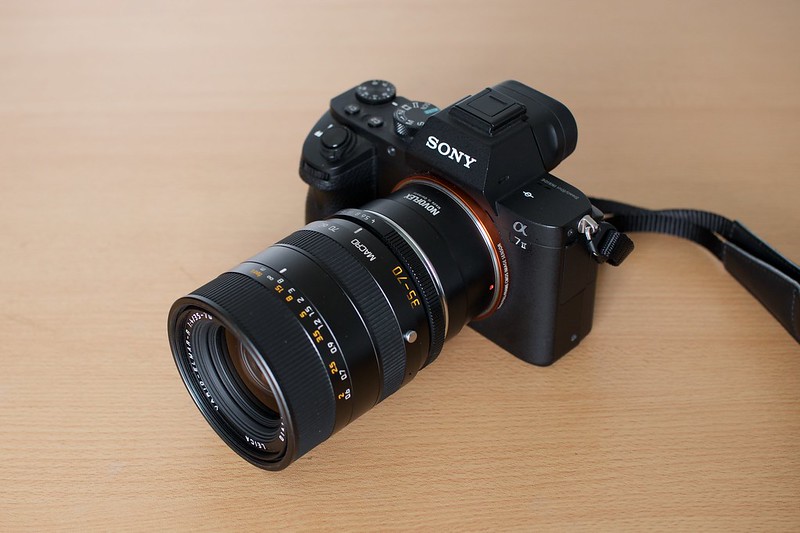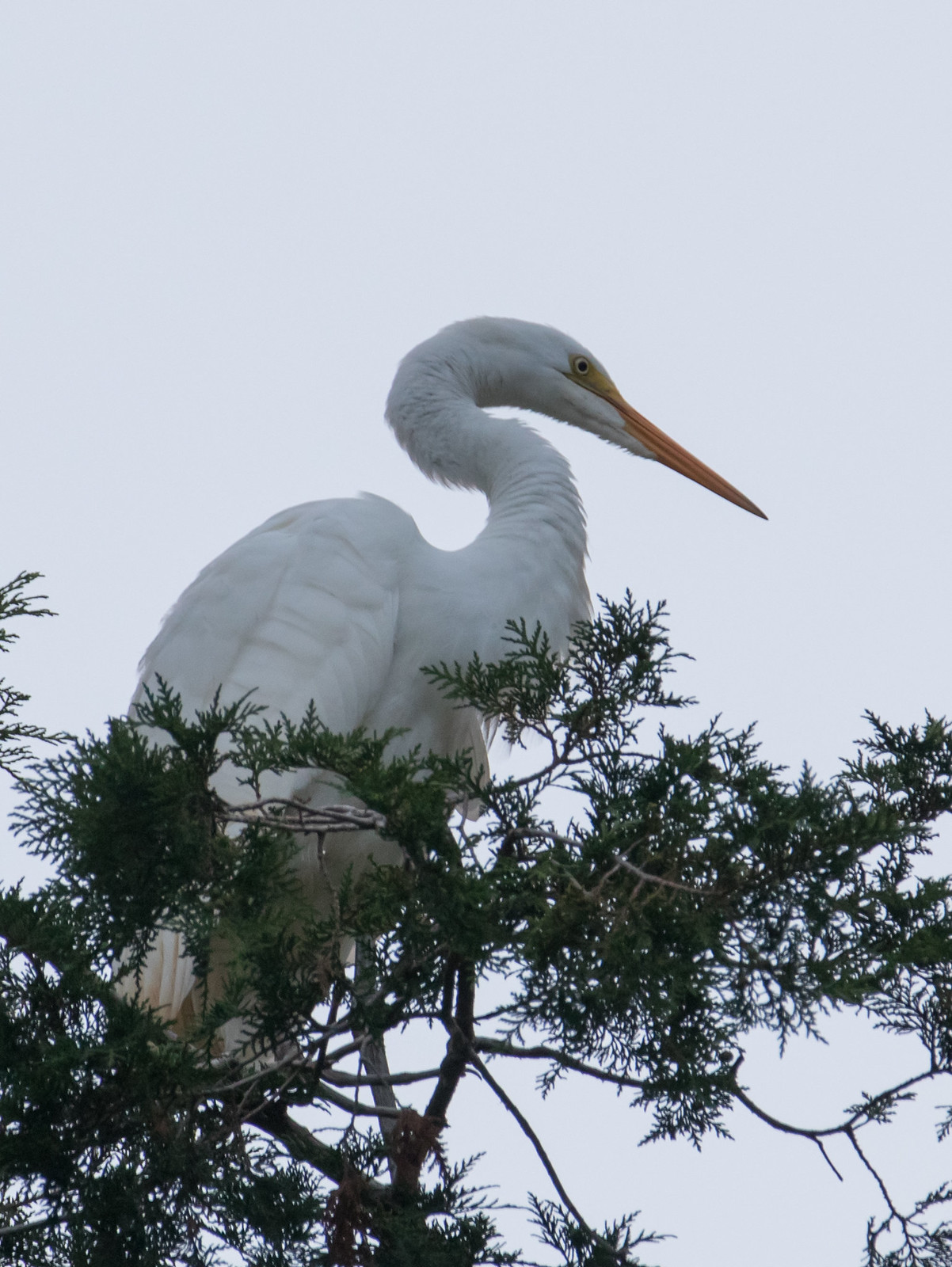As I picked up some Leica R mount glass for my A7II recently, and there isn't a whole lot of information online about the lenses, I thought it would be interesting to write some mini-reviews of each of them. It would hopefully be useful for anyone looking to use any of these lenses with a Sony A7/A9 series camera, and it's also a good excuse for me to actually go out and shoot with each of them individually, rather than just default to my trusty 50mm and leave the rest on the shelf. So, without further ado:
Mini-Review: Leica Vario-Elmar-R 35-70mm f/4
 Sony A7 MkII with Leica Vario-Elmar-R 35-70mm f/4
Sony A7 MkII with Leica Vario-Elmar-R 35-70mm f/4 by
Owen Rooney, on Flickr
The 35-70mm f/4 was one of the later lenses released for the Leica R system, with production running from 1997 until they discontinued the system in 2009 (mine is a 1998 copy). While their previous zooms had all been designed and built externally (by Sigma and Minolta), this was the first R-mount zoom lens that Leica actually designed in-house, although it was manufactured in Japan by Kyocera, known for the Yashica brand. It's also interesting in that it has an aspherical element, although it wasn't given the "ASPH" designation by Leica, likely as it was one of the "cheaper" lenses in the R lineup. It seems to be the best-regarded of the R-mount zooms, with the exception of the later 28-90mm f/2.8-4.5 and 35-70mm f/2.8, although as they sell for over $5,000 and over $10,000 respectively they're well out of the reach of us mere mortals.
Mechanically it's extremely well made, with nothing lost by the manufacturing taking place in Japan rather than Germany. It's made entirely of metal, and feels like it, with a weight of 505g and a relatively small body making it feel quite dense. Although it's relatively short for a standard zoom, the R-mount adapter adds quite a bit to the length, as you can see in the photo above. The zoom and focus rings are both very smooth and well-damped, and the button-press to engage the macro mode works quite well. The aperture ring feels very good too, with solid half-stop clicks.
Optically it seems as close to perfect as I could need. I haven't done any methodical studio testing, and I'm not generally one to obsessively pixel-peep all my photos, but I haven't found a single meaningful optical failing at any focal length or aperture across any of the 280 photos I've taken with it. Even at f/4, everything is (to my standards) perfectly sharp right into the corners, and I haven't noticed any distortion, CA, or vignetting. That's not to say that they don't exist, and I have no doubt that if you put it in front of an A7Rii and did proper studio testing you'd be able to find its limits, but I haven't hit those limits in my real-world shooting on the A7ii. As it is, I'm comfortable choosing the right aperture and focal length for a shot without having to worry about how the lens performs, which is a nice position to be in with a zoom.
I find the bokeh to be quite nice, although it's of course very subjective. The 7-bladed aperture doesn't produce perfectly-round highlights when stopped down, although outside of macro photography you've got such a large depth of field when stopped-down that it's not really an issue. The photos linked below should give people a good idea of how it handles bokeh (the macro shots are all f/8, as far as I recall, and the other photos are f/8, f/4 and f/5.6 in order, again afair).
One useful feature of this lens is that it has an honest-to-god macro mode, with up to 1:2 magnification. I'm actually really surprised with the results from this, as again the lens performs really well. I haven't noticed much field distortion, which I understand tends to be an issue with zooms with macro modes bolted on, although again I haven't rigorously tested for it. It's still just as good as it is in non-macro mode, and allows you to get extremely close to the subject (literally a few centimetres from the front of the lens). It has reminded me of just how difficult it is to shoot moving insects, but I can hardly blame the lens for that.
Overall I'm extremely happy with the lens, although whether I'd actually recommend it is a bit more complicated. Most people like manual focus film lenses as they offer a cheaper alternative to modern autofocus glass, but in this case you're going to have to drop perhaps $900 or more to get hold of one, going by eBay prices. I was fortunate enough to get a very good deal on a collection of R-series kit, but I have to admit that it would be a more difficult sell at that price, as you're not far off modern f/4 zooms like the Sony/Zeiss 24-70mm f/4 or the Canon 24-105mm f/4. They offer longer zoom ranges, autofocus and, in the case of the Sony/Zeiss, a smaller, lighter package. On the other hand, the Leica has a far superior macro capabilities, and better build quality.
The question with this lens is really how comfortable you are with manual focus, and how happy you are with the zoom range. If you're specifically looking for a manual focus zoom, though, then I would whole-heartedly recommend it. There aren't many good manual focus zooms around, but this has to be one of the best of them (no doubt helped by the fact it was built after most of the industry had given up on manual focus). It works excellently as a good-weather walk-around lens, and has pretty much negated any need for a dedicated macro lens for me too.
Sample photo set 1
Sample photo set 2 (Macro)
Bonus Nano-Review: Novoflex Leica R to Sony FE Mount Adapter
I just thought I'd mention that the Novoflex adapter I've been using for my R-mount glass is excellent. I've got a couple of cheap K&F Concept adapters, which actually work quite well for the price, but the Novoflex is so much better than them in build quality it's crazy. Additionally, unlike the cheaper adapters which allow you to focus past infinity, the Novoflex provides precise infinity focus, which both makes it easier to shoot landscapes, and also means that the focus scale on the lens can be relied upon. I understand that the Novoflex ones can be very expensive in some places, but as I'm in Europe I was able to get it for €119, which is about the same as a Metabones adapter would usually sell for. The only downside is that you have to pay quite a lot extra for a tripod collar, although I don't feel that any of my lenses are large or heavy enough to warrant it.


